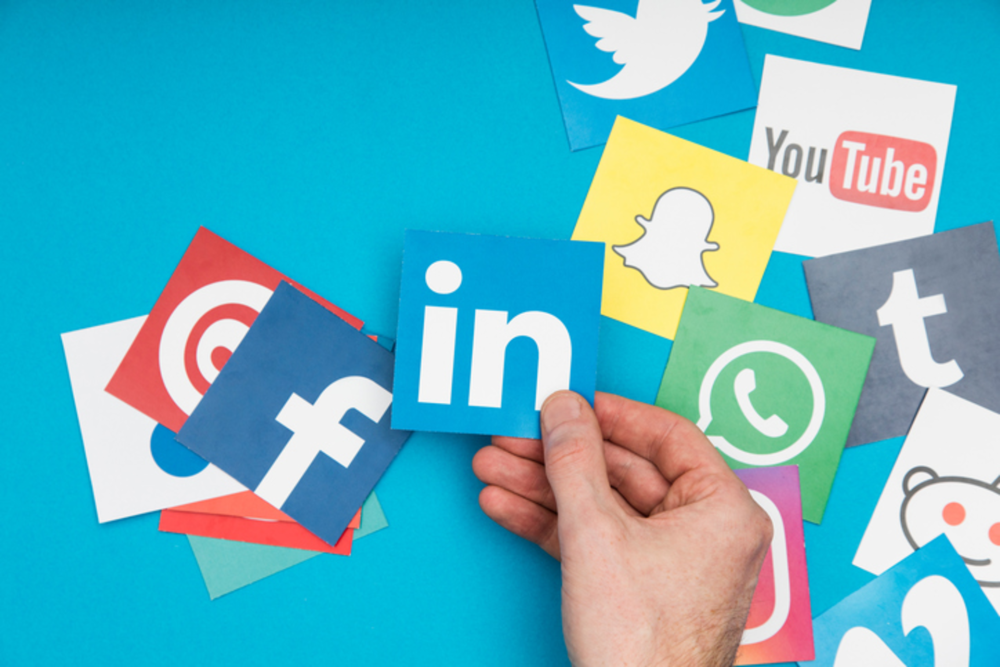If you’re a B2B marketer, then you’re probably already aware of how useful LinkedIn can be. The “social media network for professionals” has grown from beyond a simple job search site, and into a powerhouse for networking, thought leadership, and of course — marketing and sales opportunities.
Last year, LinkedIn took strides to increase their media and advertising efforts with the introduction of their expanded Audience Network, as well as native video for non-company pages. Following the changes, LinkedIn reports a 60 percent spike in views on their News Feed, and twice the engagement from likes, comments and shares.
This media-focused initiative presents new opportunities for B2B marketers, especially following Facebook’s recent algorithm changes that place new restrictions on branded content.
According to LinkedIn, nearly 97 percent of B2B marketers already include the platform as part of their strategy. But if you’re just getting started, here’s a simple breakdown of what you need to know:
Types of LinkedIn advertising
Sponsored content: Promoted articles or links that appear in your LinkedIn feed. Brands can choose to promote content organically posted on their company page (for general brand awareness) or create specific sponsored content campaigns tailored to customized audiences. For optimal performance, LinkedIn suggests testing three or four different creatives against one target audience to determine success.
Sponsored InMail: Targeted, sponsored messages that are delivered straight to select audiences through LinkedIn InMail. This tactic is helpful when aiming to create tailored, one-to-one experiences with prospects.
Text display ads and dynamic ads
Text ads typically appear in two separate places, with distinctly different appearances. A simple text/hyperlink banner ad runs alongside the top of your LinkedIn dashboard. More robust text or dynamic ads typically appear on the right-hand side of the screen. These can be accompanied by a photo, logo or other selected image, as well as opportunities for a defined CTA button. Dynamic ads offer more flexibility for content creation and select, customizable, audience targeting.
Creating your target audience
LinkedIn offers a treasure trove of targeting options, including demographics, location, company size, title, contacts, etc. Our advice? Take advantage of them. LinkedIn advertising is typically more expensive than other social media advertising platforms. Defining your audience and A/B testing your copy will help ensure you’re netting quality clicks, leads, and impressions, instead of wasting money on the void.
How to bid on Linkedin
LinkedIn bidding is similar to other types of digital advertising models. Once you select your target audience, LinkedIn will suggest a target bidding price to increase the likelihood of ad placement for maximum ROI.
Like any auction, the bidding process is very straightforward. The higher you bid above the suggested price, the more likely the ad will be selected. Higher bidding is beneficial when you’re looking to generate results or engagement quickly.
Bidding below the suggested price will deliver slower results. If you have a limited budget or are running long-term campaigns, lower bidding may be a more cost-effective strategy.
Budgeting
On LinkedIn, you’re asked to set a daily budget – simply, the amount of money you’re willing to spend on results every day. You also have the option to set an overall campaign budget and campaign duration if you want to keep your costs in check. If you set an overall campaign budget, the campaign will end when you have reached your budget limit.
The most common types of campaign goals are CPC (cost-per-click) or CPM (cost-per-impression).
CPM: When bidding for CPM campaigns, brand awareness and reach are the name of the game. You’re paying for LinkedIn to get your creative in front of as many eyes as possible. This option is great for exposure, but keep in mind that it’s typically more expensive to gain a competitive advantage here.
CPC: When bidding for CPC, you only pay when a user clicks on your ad. Strong creative tailored for your target audience is key here. You want to ensure you’re serving up the right content to drive CTR, and ultimately, conversions.
For more tips of managing your LinkedIn ad budget, check out our earlier coverage here.
Featured Post: Marketing: Meaning, Strategies, and Careers








